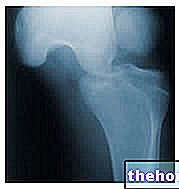
In direct trauma, in which the force acts on the muscle by squeezing it against the deep planes, the damage produced varies from simple contusion to muscle breakage, depending on the violence of the trauma and the state of contraction of the muscle.
The muscles most affected are the deltoid, quadriceps and twins.
In indirect trauma, in which there is no direct contact against a traumatic force, we can hypothesize a neuro-muscular dysfunction such as a sudden passive elongation of the muscle due to a traction force applied during the contraction phase or a too rapid contraction of the muscle belly starting from a state of complete relaxation.
The muscles most affected are the brachial biceps and hamstrings.
- climatic situations (cold)
- environmental situations (unsuitable pitch).
- Intramuscular: the hematoma is delimited by an intact muscle band and clinically manifests itself with pain and functional impotence.
- Intermuscular: the hematoma expands into the interfascial and interstitial spaces if the muscle band is torn and in this case there is no increase in pressure inside the muscle.
- Second degree injury: more severe than the previous one, but without complete interruption of the muscle-tendon unit;
- Third degree injury: complete rupture of the muscle-tendon unit.
Reid
Reid classifies indirect muscle injuries into:
- Exercise Injuries
- Muscle tear of which it recognizes 3 degrees
- I degree or mild: minimal structural damage, small bleeding and rapid healing;
- II degree or moderate: partial rupture and early significant functional loss;
- III degree or severe: complete rupture surgery may be required;
- Bruising can be mild, moderate and severe.
Muller - Wohlfahrt
Muller - Wohlfahrt distinguish the lesions according to the structural unit involved:
- Muscle strain that never has fiber breaks
- Tearing of the muscle fiber
- Tear of the muscle bundle
- Muscle tear.
It then distinguishes the Indirect Trauma in various degrees of severity
- Contracture: diffuse alteration of muscle tone that causes pain at a distance from sporting activity and is difficult to localize
- Stretching: functional alteration of myofibrils, acute, occurs during sports activity with hypertonicity and well localized pain
- Tore up: laceration of a variable number of muscle fibers accompanied by acute and violent pain during a sporting activity. Depending on the amount of lacerated muscle, three degrees are distinguished:
- First degree tear: a few lacerated myofibrils within a muscle bundle;
- Second degree tear: laceration of several muscle bundles that affects less than 3/4 of the anatomical sectional surface of the muscle of that point;
- Third degree tear: muscle break that affects more than 3/4 of the surface of the anatomical section of the muscle at that point and can be further divided into partial or total.
A.J. Ryan
A.J. Ryan proposed a classification of quadriceps muscle injuries that can be used as a subclassification for all muscle injuries:
- Grade I laceration of a few fibers with the band intact;
- II Degree laceration of a fair number of fibers with the intact fascia and presence of a localized hematoma;
- III Degree laceration of many fibers with partial lesion of the fascia and presence of bruising;
- IV Degree complete rupture of the muscle and fascia.
Musculoskeletal pain generally dominates in the athlete, therefore a deep somatic pain that originates in the myofascial, tendon, capsular, ligamentous, osteoperiosteal and articular structures.
In particular, due to the need to evaluate the times and methods of competitive recovery, and the best therapeutic strategy, the diagnostic differentiation must be punctual with respect to the operating pathogenetic mechanism and the anatomical / functional structure involved.
It should be emphasized that in the assessment of painful manifestations in the sports subject it is essential to bear in mind that both the pain threshold and the pain tolerance threshold are higher, and that the pain sensitivity range - by which we mean the difference between pain threshold and pain tolerance threshold) of those exercising competitive physical activity and is not significantly wider than in normal subjects.
Management of Pain, Bonica, J.J. ed., 2nd ed., Lea & Febiger, Philadelphia-London, 1990.



























